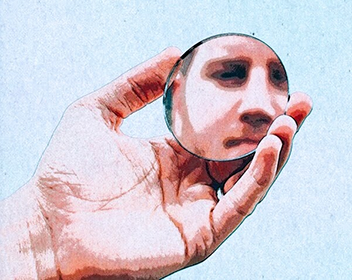
What about the hinges?

We act in accordance with our self image.
— Moshe Feldenkrais
Awareness Through Movement
Recently, Yulia Kriskovets, a member of the communication team of the Feldenkrais Guild of North America®, interviewed me about the Feldenkraisian perspective on self-image. I talked about how we perceive ourselves influences and the role that habit plays in our self-perception. I also addressed how Feldenkrais teachers perceive our students and the learning process, how self-image is central here as well.
At one point, I recounted a story my friend and colleague Anna Johnson Wolfe tells about a student in a program for actors. The student’s question, “What about the hinges?” illustrated Moshe’s idea of self-image in a most delightful way.
If you’re interested in how your perception influences your choices or if you’re curious about what the heck the acting student’s question means, I invite you to view the video below:
Another esteemed compatriot — we met back when we were studying Neurolinguistic Programming, and I was a budding Feldenkrais teacher — Al Wadleigh, recently wrote a delightful, insightful article tying self-image to Korzybski’s concept that “the map is not the territory.” Al develops an explicit systemic framework congruent with what I discuss in the video. Please click here to read his engaging and informative take on this significant subject.
Your thoughts?
Please let us know your perspective! Add your comments, reactions, suggestions, ideas, etc., by first logging in to your Mind in Motion account and then clicking here.
Commenting is only available to the Mind in Motion Online community.
Join in by getting your free account, which gives you access to the e-book edition of Articulating Changes (Larry's now-classic Master's thesis), ATM® lessons, and more — all at no charge whatsoever.
To find out more and sign up, please click here.
Please share this blog post
 This work is licensed under a Creative Commons Attribution-ShareAlike 4.0 International License
This work is licensed under a Creative Commons Attribution-ShareAlike 4.0 International License
This blog may contain one or more affiliate links. When you click on a link and then make a purchase, Mind in Motion receives a payment. Please note that we only link to products we believe in and services that we support. You can learn more about how affiliate links work and why we use them here



Wow Larry, what a fabulous interview! I’ve listened to it twice, and know I will listen several times more. Lots there to unpack and think about.
Plus…it reminded me of how once, one of my early tai chi students told me she was “shocked” to learn that the shoulder blades could actually GLIDE over the ribs, because she had always believed them to be “screwed to the ribs somehow.” Which is exactly how she moved, in a very limited fashion — until she understood that her shoulder blades could move, and then everything changed for her.
Hello again Alice –
Since pretty much every model skeleton has immobile shoulder blades — because they are physically wired or screwed to the ribs — it’s easy to understand how someone could mistakenly have this assumption.
Another excellent example of the inaccuracy of the self-image!
Hello Alice –
Thank you! There sure were lots of layers to that conversation about self-image.